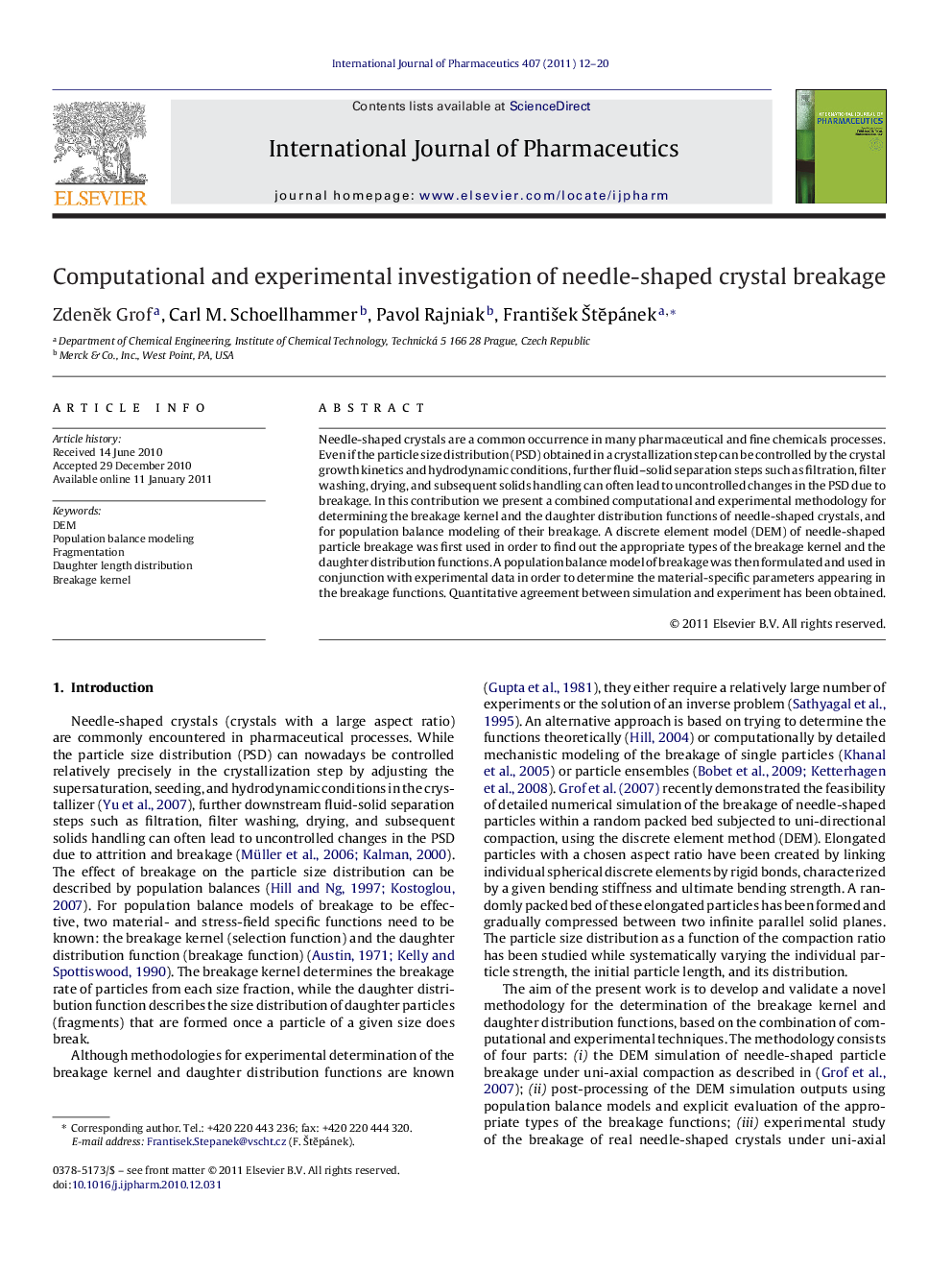| Article ID | Journal | Published Year | Pages | File Type |
|---|---|---|---|---|
| 2503751 | International Journal of Pharmaceutics | 2011 | 9 Pages |
Needle-shaped crystals are a common occurrence in many pharmaceutical and fine chemicals processes. Even if the particle size distribution (PSD) obtained in a crystallization step can be controlled by the crystal growth kinetics and hydrodynamic conditions, further fluid–solid separation steps such as filtration, filter washing, drying, and subsequent solids handling can often lead to uncontrolled changes in the PSD due to breakage. In this contribution we present a combined computational and experimental methodology for determining the breakage kernel and the daughter distribution functions of needle-shaped crystals, and for population balance modeling of their breakage. A discrete element model (DEM) of needle-shaped particle breakage was first used in order to find out the appropriate types of the breakage kernel and the daughter distribution functions. A population balance model of breakage was then formulated and used in conjunction with experimental data in order to determine the material-specific parameters appearing in the breakage functions. Quantitative agreement between simulation and experiment has been obtained.
